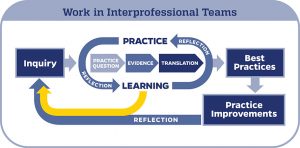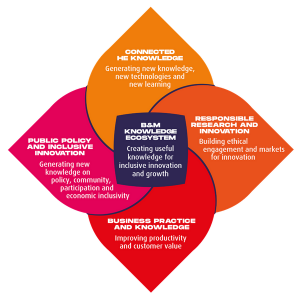Visualization tools and their scope
The practical application of visual research tools (visualization tools) can be organized in various ways and, therefore, can give the user answers to questions of various levels of complexity. In the simplest case, visualization provides confirmation or refutation of a previously formulated answer to a question and does not require additional reflection. Thus, an illustrative function of visualization tools is determined, which has a pronounced practical orientation.

Another case of such application of visualization tools is the demonstration of the results of solving analysis problems obtained by other means. The development of visualization capabilities in this direction is the automation of procedures for the development of visualization tools, as well as the search for forms of visual representation that reduce the time for interpreting the data under study.
Of considerable interest are ways of more complex use of visualization tools based on the goal-
directed interaction of the researcher and visual research tools. Such a conclusion is associated with the visualization features that provide the interpretation of visual images based on the user’s prior awareness and the high speed of visual perception processes. However, the realization of the potential benefits of visual
Problems of visual research
The complexity of extracting new knowledge as a result of interpreting the original data using visualization tools is associated with insufficient validity of existing approaches to the use of visualization. In addition, the development of visualization tools and their practical significance make it relevant to rationally use the potential of modern computer technologies and any other resources involved. To obtain such a justification, it is necessary to conduct large volumes of interdisciplinary research and determine a formalized approach to visual research.
Systematization of the efforts made to create visualization tools is a condition for achieving a high level of cognitive interpretability of the studied data, providing new knowledge. The creation of visual research tools with predictable and manageable performance will expand their use as an applied tool in scientific research. The specificity of visualization tools allows us to assert that their effectiveness can be significantly improved through the active use of the researcher’s own potential, including informative, cognitive and emotional. At present, the involvement and active use of the cognitive potential of the researcher is a passive reserve of existing research tools.
In studies, provisions are formulated indicating the need
lization in solving practical problems can be ensured only with the appearance of a systematic approach to the development of visualization tools, as well as after determining the methodology for conducting visual research. The purpose of such a systematization is the reasonable use of any attracted resources to achieve the goal of the study.

taking into account several levels of additional information in the analysis of visual images: technological, linguistic, genre, aesthetic, ideological. There are a number of common problems that prevent the realization of the potential of visualization tools as a tool for the study of various types of data [1; 9]. Analysis of examples of the actual application of visualization, including for scientific research [3; 5; 7], made it possible to identify the most pressing questions, the answers to which give grounds for the reasonable practical use of visualization. As a result of the systematization of efforts aimed at developing tools for visual data research [4; 6; 8], the selected questions can be divided into two groups:
• justification group – questions related to errors in understanding the internal patterns of visualization;
• Evaluation group – questions related to obtaining quantitative characteristics for comparing different visualization tools.
Determining the quantitative characteristics of visualization tools is a condition for increasing the practical applicability of visualization tools, as it will make it possible to make a reasonable choice of the necessary research tools before it starts, and will also create conditions for the development of visual research tools that surpass existing ones in terms of criteria of interest within the framework of the practical task being solved.
